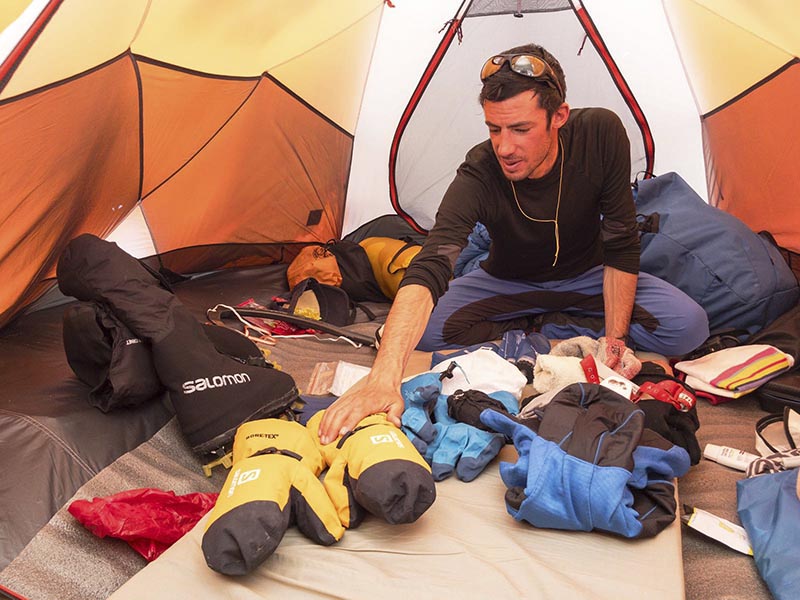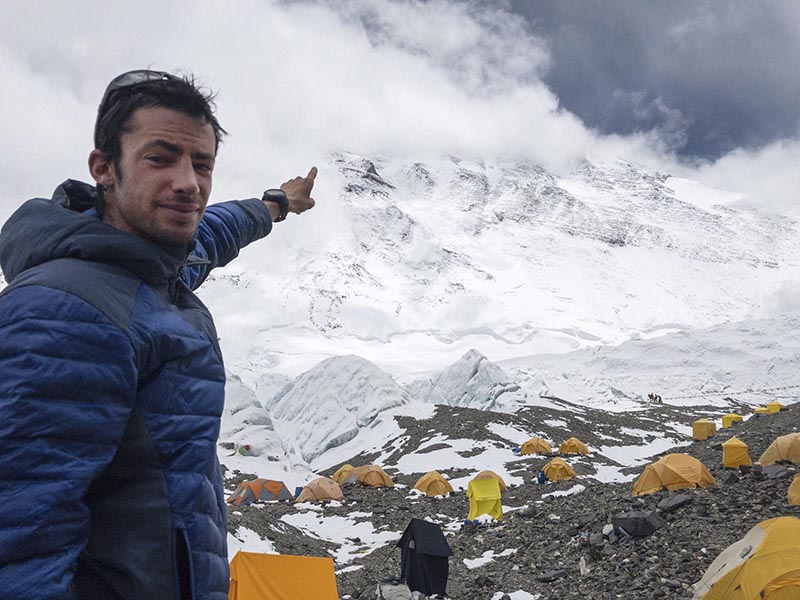High-altitude runner Kilian Jornet conquers Everest, twice
BARCELONA: Their bodies and brains ravaged by the oxygen-scarce heights of the Himalayas, even the hardiest few who scale the treacherous slopes of Mount Everest cut short celebrations for some well-deserved rest.
Not Kilian Jornet.
Somehow, he still had some legs left.

"My plan was to go up one time," Jornet told The Associated Press in a recent interview in Barcelona, just south of his native Pyrenees. "When I was going down, I was like, 'Hmm, we could have some days before we leave' ... I wanted to try to go back up again."
So the man who has helped nurture high-altitude running from obscurity into the forefront of extreme mountain sports set out for a second solo ascent in a six-day span of the tallest peak in the world.
Not that Jornet had anything left to prove. Despite being slowed by a stomach bug that caused him to vomit and cramp while climbing, Jornet made his first ascent up Everest's north face from the base camp near the Rongbuk monastery in Tibet at 5,100 metres, crowning the 8,848-metre summit around midnight of May 21 in 26 hours after one continued push. That was the fastest known time for the route without the use of supplemental oxygen, according to the International Skyrunning Federation, which governs high-altitude racing.
By May 27, Jornet had recovered quickly enough to make a second ascent from an advanced base camp, at 6,400 meters. He reached the summit in 17 hours, only 15 minutes slower than the record set by Hans Kammerlander in 1996.
The 29-year-old Spaniard did both ascents without the help of other climbers, fixed ropes, or supplemental oxygen to counter the brain-withering effects of the "death zone" above 8,000 metres.
Only about 200 climbers have ever made it up Everest without the use of supplemental oxygen. Before Reinhold Messner and Peter Habeler did it in 1978, it was thought to be a guaranteed death. Only about 20 have ever done it twice.
With or without supplemental oxygen, Everest remains one of the most perilous places on the planet. Nearly 300 people are known to have died on the mountain. This year is proving particularly deadly, with 10 lives lost through May.
Experienced American mountaineer Adrian Ballinger was climbing Everest for the first time without supplemental oxygen when he crossed paths with Jornet on his descent on May 22.
"I could see the pride and exhaustion in his eyes after the first climb," Ballinger, who has climbed Everest six times with oxygen, told the AP by telephone. "The big thing is really to do it twice in one week. I have climbed it with oxygen twice in one week and found it incredibly challenging. This time (without supplemental oxygen) it was devastating."
Jornet, who carries minimal gear, has years of experience running long-distance races in the mountains. He tried it in Everest's thin air.
"I went walking until 8,000 metres and I tried a sprint," Jornet said. "I went up running, and after 50 metres I just threw myself on the ground to recover. But that was just for fun."
Long before Everest, Jornet had established himself as one of the premier athletes in extreme mountain sports. He has broken speed records for ascents of Kilimanjaro, Matterhorn, Mont Blanc, Aconcagua and Denali, among other mountains. He has won the Skyrunning world championship six times.
Graced with a small, wiry build that helps him scamper up rocks and dart along narrow mountain paths, Jornet said his main advantage is the ability to recover quickly by checking his pace.
Jornet grew up in a mountain refuge in Catalonia's Pyrenees near the Spanish border with Andorra. As a kid he would ski, run and bike the 10 kilometers back and forth to school each day.
"I climbed my first 3,000-metre peak when I was 3, my first 4,000-metre peak when I was 5," Jornet said. "I have been training since I was 13 every day."
Jornet has also seen how quickly competition can turn tragic. His friend Stephane Brosse plummeted to his death while the two were skiing on Mont Blanc in 2012.
And in 2015, when an earthquake rocked Nepal, Jornet aborted his expedition to climb Everest. He decided to stay and help, however, hiking with two companions into cut-off villages to identify the dead and bring in desperately needed supplies.
A year later, Jornet returned to check on the rebuilding efforts in Nepal, and to take another shot at Everest. But the cool-tempered Jornet pulled the plug when the conditions turned ugly, with heavy snow and high winds producing a series of avalanches.
"We got covered three times," Jornet said, "one time the avalanche just passed over me, and at that moment I was like, yeah, it could be the last one."
READ ALSO:






